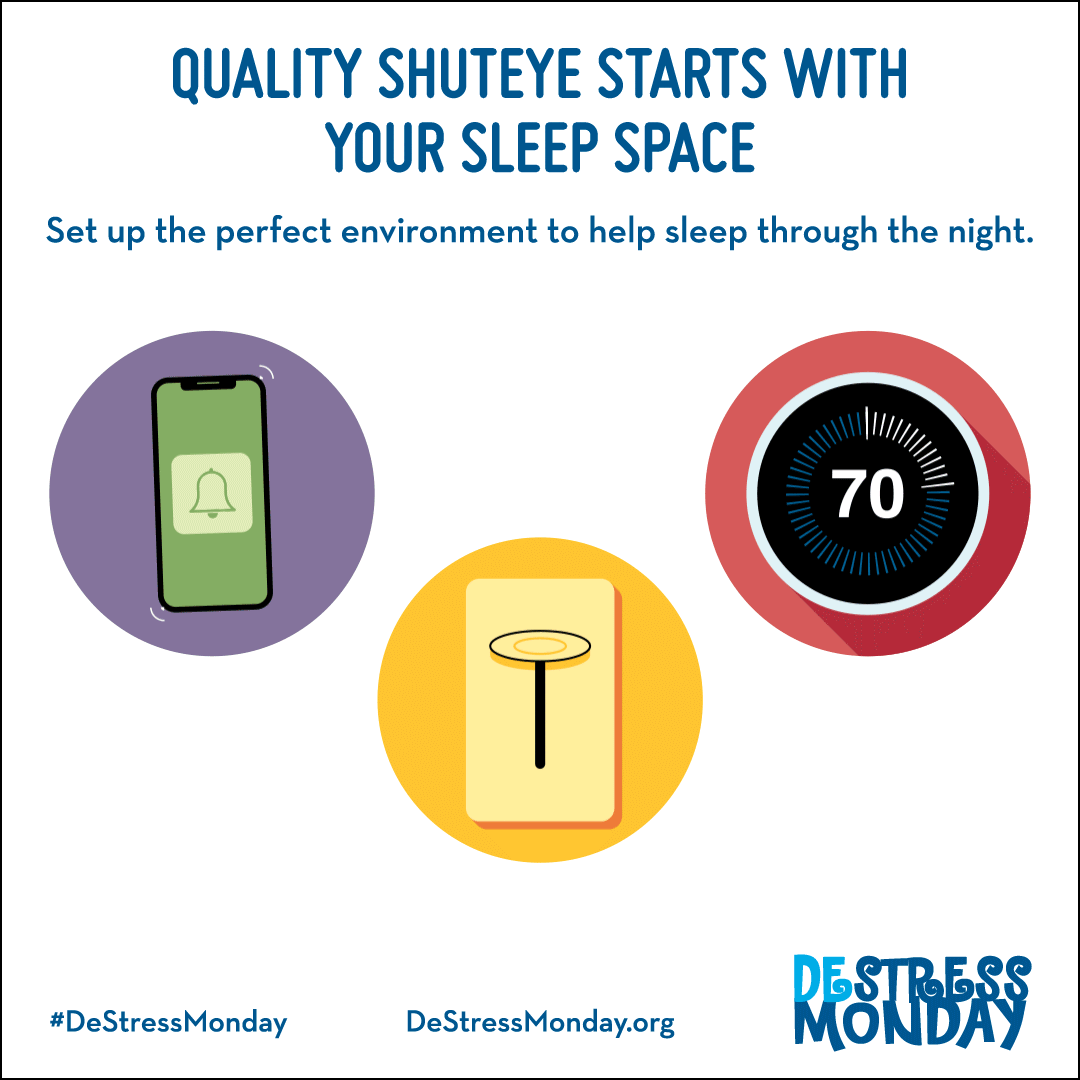REST - Week 3
Weekly Sleep Topic
Having trouble sleeping? Your bedroom may just be the problem. Light, temperature, layout, clutter, and even color palette can all affect the quality and duration of your sleep. And if you’re trying to get rest in an on-call room, it’s even harder to set-up a supportive sleep environment!
So how do you go about creating the ideal sleep space?
Unfortunately, there isn’t a one-size-fits-all approach. People have their own preferences and requirements, which means not everyone’s sleep environment will look the same. That being said, there are some general best-practices when it comes to optimizing your bedroom for sleep.
Dr. Pooja Amy Shah, Assistant Professor at Columbia University and sleep expert, offers three easy ways to create a comfortable sleep space. And don’t worry, you don’t need to be an interior decorator or whizz with a drill to apply them to your bedroom. This Monday and throughout the week, use the tips below in order to sleep a little easier.
Keep It Dark
Light has a major influence on your circadian rhythm, the part of your biological clock that helps regulate sleep, so when it’s time for bed, you want to keep your room as dark as possible. If your bedroom receives a lot of exterior light, use drapes, blackout curtains, or a sleep mask. (To be provided in the REST tool-kit)
Keep It Quiet
Too much noise can be disruptive and make it difficult to fall asleep. Sealing the bottom of your bedroom door with a rolled-up towel is a great way to minimize noise coming from adjacent rooms. White noise is also a way to control the sound in your bedroom. An oscillating fan gives off a soothing hum that can mask strange noises and create a sense of calm. Ear plugs are a low-tech way of blocking out noise to help you sleep. (To be provided in the REST tool-kit)
Keep It Cool
Excess heat can affect the quality of your sleep and cause you to wake up in the middle of the night. That’s why experts recommend keeping your bedroom temperature somewhere between 60 to 67 degrees Fahrenheit. Don’t have a thermostat or an air conditioner? No problem. Use a box fan or an open window, depending on the season. Or take a hot shower to cool your core temperature down.
Move the Clock
Even though it is tempting, to peek at the time when you are “trying” to go to sleep, it is not helpful. Keep your clock on the other side of the room, and don’t clock watch when you are having a difficult time going to sleep.
Patient Resources
Click here to download the Sleep Environment Activity PDF.
Epic Smartphrase: .SleepEnvironmentActivity
Click here to download the Body Awareness for Sleep PDF.
Epic Smartphrase: .BodyAwarenessForSleep


